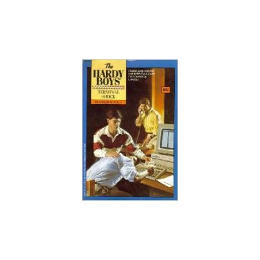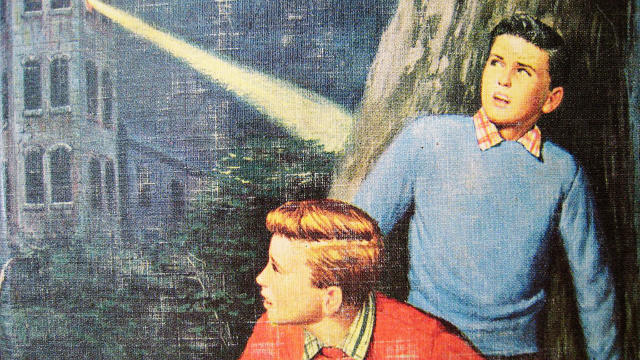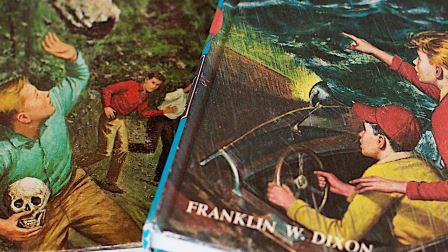How A 1990 Hardy Boys ebook Presaged the way forward for The web
Late closing yr, whereas engaged on a narrative about the early days of healthy.com, I heard a number of reminiscing concerning the days just prior to the net took off.
in shape’s early users and staff shared reminiscences of once they first used their computers to dial up to the surface world—to CompuServe, to the Bay area’s whole Earth ‘Lectronic link , or to some of the different local bulletin board programs that dotted the u . s . within the late ’80s and early ’90s.
I was slightly too younger to have in point of fact experienced the BBS era, and that i used to be a little too embarrassed to confess the place I first learned that people might use computers to talk to one another: from an oddly futuristic Hardy Boys e book I learn somewhere around the fourth grade.
but a quick, nostalgic Amazon search became up the e book in query, on hand for just a penny (plus transport). Terminal Shock, I rediscovered a number of days later, offered the crime-solving teen brothers and their impressionable fanatics to designer drugs, high-secret superconducting microchips, and evidence buried in encrypted emails, by some means all inside a couple of sq. miles of the boys’ suburban homeland.

In between bursts of G-rated sibling rivalry—the phrase “stick a sock in it” seems via the fourth web page—boy detectives Frank and Joe Hardy even struggle with mass email surveillance, years earlier than high-speed home web.
“happy to hear you’ve obtained that AT clone up and working, with that 4800 baud modem,” the boys read in an e mail from a friend. “wager that 386 processor really screams!”
All that modem discuss is just so much gobbledygook to Joe, the younger Hardy. Pages later, the brothers receive an pressing quick message from the operator of their place of birth bulletin board. they will quickly find him in a coma, the victim of a genetically engineered “designer poison” medical doctors say will kill him within per week. the principle apparent clue is the email archive for the machine, contained on an encrypted floppy disk. When the boy detectives discover the password to liberate the disk, they proceed their investigation in a technique that seems oddly topical—and more than a bit stressful—these days: reading through every consumer’s non-public email inbox on the gadget until they find a clue.
having a look again, the plot line seems now not most effective oddly futuristic for 1990, when the worldwide internet was in its infancy, but additionally atypically darkish for a youngsters’s mystery collection I normally take into account that as the literary an identical of Scooby-Doo.
So I set out to learn the way the teen detectives came to tackle the not-rather-internet so early, and how its creator may really feel today about the Hardys’ mass-surveillance strategy to crime solving.

Like all of the Hardy Boys books because the sequence’ debut within the Nineteen Twenties, Terminal Shock was published underneath the pen name Franklin W. Dixon. Dixon by no means really existed—the collection was once at the start written by means of Canadian journalist Leslie McFarlane under the course of editor Edward Stratemeyer, who also created the Nancy Drew, Bobbsey Twins, and Tom Swift sequence at around the similar time. (every other Stratemeyer collection, referred to as The movement image friends, has considering been studied for its depiction of the early film trade, at a time when movie studios and theaters have been the tech startups of the day.)
in the 1980s, the Hardy Boys and Nancy Drew books had been being printed by means of Simon & Schuster and written through a new era of Franklin Dixons. I contacted Simon & Schuster to look if they might put me in contact with the ghostwriter, but a spokeswoman for the writer wasn’t able to find Hardy Boys information pre-1998. She did point out, though, that the books were put together via big apple book packaging firm Mega-Books Inc.
big apple state data indicated the company hadn’t been energetic in a decade, but I reached out to the previous Mega-Books executives I could find on-line. a few weeks later, I obtained a call from Christopher Lampton, the author of Terminal Shock.
Lampton says he was once one in every of a lot of freelancers recruited by Mega-Books editor William McCay to modernize the series for a new generation of readers. “He didn’t need to do your father’s Hardy Boys,” says Lampton, who’d go on to put in writing 11 books for the collection.
Lampton had up to now written science and know-how books for kids and adults, as well as some science fiction. He’d even ghostwritten for a Stratemeyer-style sequence referred to as The Thorne Twins, whose protagonists solved mysteries in response to Christian rules. Working with McKay, Lampton says he drew on his personal historical past in science, in addition to some experience working in radio and television, for Hardy Boys concepts.

considered one of his books, referred to as risk on the Air, is about at a local television station; any other, known as Rock ’n Roll Renegades, noticed Joe as a disc jockey dealing with off in opposition to nefarious pirate radio broadcasters.
“To inform you the truth, I used it as an excuse to write about all these corny ideas,” says Lampton. “Hardy Boys—what an ideal excuse to write down about all these ideas I had floating around my head considering the fact that I was once an adolescent.”
Lampton, who says he’s lately centered extra on technical and nonfiction writing, started the use of CompuServe in 1983 and idea that his younger readers would revel in a ebook set in the digital world.
“Even then, the funny story used to be that kids knew more about computers than adults,” he says. “i attempted to write in regards to the expertise that may be on hand on the time, as a result of I knew a lot of youngsters would learn about that.”
And the plot fit the rules of Mega-Books’s “sequence Bible,” which Lampton says depicted the elder Frank as “more willing to use his brains” and tools like computer systems. “We have been very cautious by no means to portray them precisely as geeks,” he recollects.
throughout the book, because the boys clear up the mystery, Frank pauses frequently to give an explanation for tech terminology to technophobic Joe and, of course, to much less-than-savvy younger ’90s readers like myself. “it can be roughly like recording tape, except that it’s spherical and flat as a substitute of long and thin,” he says of a floppy disk.
“i believed one of the most target market would relate to that, in view that some of the people who have been operating these local bulletin boards in my area had been children,” says Lampton.
The healthy Hardy formula infrequently meshes awkwardly with the ebook’s darkish subject matter: At one level, the boys meet the comatose poisoning sufferer’s lady friend for pizza at “a favourite hangout for Bayport youngsters.” She declines a 2nd pepperoni slice, saying she’s too concerned to have much urge for food. “I had to stretch this factor out to the length of a e book,” Lampton factors out, not unfairly. “I’m happy I had the lady friend make the remark that it used to be inappropriate.”
The technical details had been largely accurate, he remembers, designed to be simply fairly beforehand of the ebook’s time. the major miscalculation he remembers: the emailed boast a couple of 4800-baud modem. Modem know-how largely went straight from 2400 baud, or bits per 2nd, to 9600, with few devices sending knowledge on the fee in between, he remembers.
And while indiscriminate warrantless e-mail snooping now feels out of personality for the healthy Hardy Boys, native BBS email used to be a much much less private medium in 1990 than our e-mail money owed are lately, Lampton says.
“Let’s put it this way: Hillary Clinton wouldn’t be sending emails to one in every of her embassies over this type of programs,” he says.
(33)













